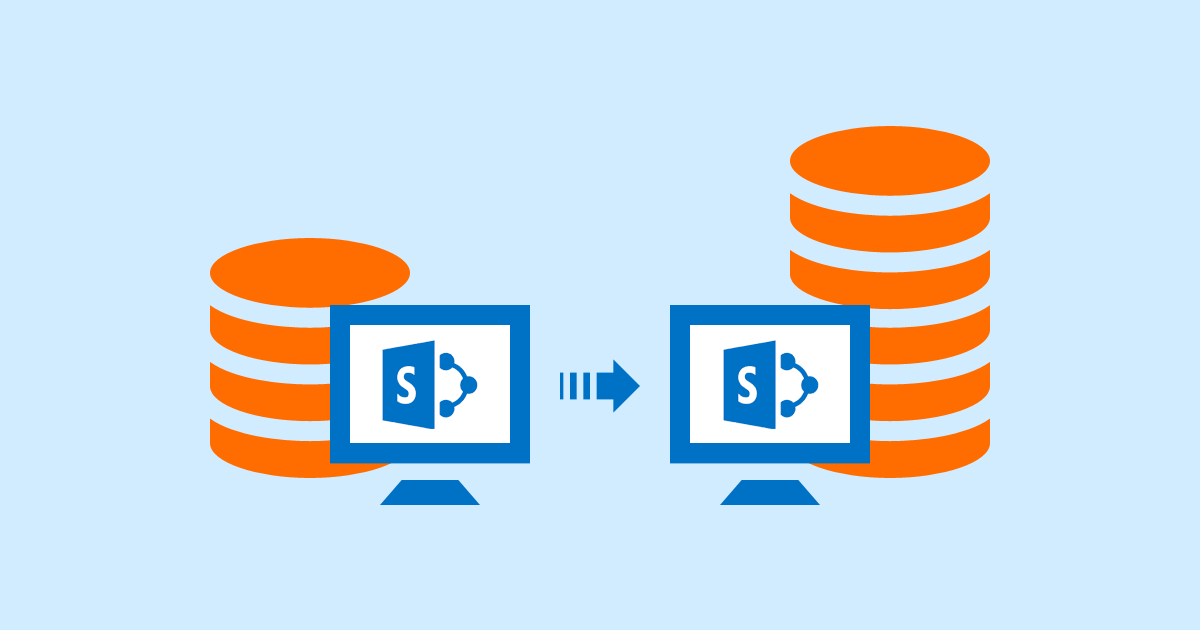

Migrating from SharePoint On-Premises to SharePoint Online
Office 365 is among the most prominent cloud solutions adopted by businesses around the globe for accessing productivity applications like Exchange, Word, Excel and the like. An integral part of this suite is SharePoint Online that organizations use to share and manage content, knowledge, and applications online. This service gives businesses the unprecedented capability to seamlessly collaborate within the organization and beyond prompting users to upgrade their legacy systems to the new SharePoint Online platform that is a part of the Office 365 suite.
This article is intended to be a comprehensive guide on migrating from on-premises SharePoint to SharePoint Online.
Difference Between On-Premises and SharePoint Online
The primary difference between on-premises SharePoint and SharePoint Online is the way the application is delivered and consumed. While on-premises SharePoint is a product that is installed on the client infrastructure, SharePoint Online is an application that is delivered as a service by Microsoft. Consequently, the onus of applying security patches and upgrades is transferred to Microsoft in the case of SharePoint Online. This simultaneously reduces the resources required for maintaining SharePoint while ensuring persistent availability. Besides, there is no requirement for SharePoint Client Access License in the case of SharePoint Online allowing users to procure it either as a standalone plan or as a part of Office 365.
Planning On-Premises to SharePoint Online Migration
There is no one-size-fits-all solution to a typical on-premises SharePoint version to SharePoint Online. Each scenario would involve careful consideration of the Governance Plan and an Information Architecture to plan and create a roadmap unique to the business. This involves creating and enforcing rules that would be used for the maintenance and operations on SharePoint during and after the transition apart from identifying appropriate milestones along the migration process.
The Caveat of SharePoint Online Migration
The features of SharePoint 2010 are different from that of SharePoint 2013 or SharePoint 2016. SharePoint 2019 has even more updates. The migration path from any of these on-premises versions to SharePoint Online would vary significantly from each other. Also, there are variations in the SharePoint Online plans. It is, therefore, necessary to evaluate the differences thoroughly and identify the features necessary for the business before choosing the appropriate plan. Then it boils down to adopting the right migration strategy to review the inventory and decide what must be done with each site and application.
Tools and Techniques for Migrating to SharePoint Online
Both Microsoft and third-party providers have developed various tools for SharePoint migration. The techniques for migration would depend on various factors like the on-premises version, the size, number, and features of sites and applications apart from other factors. The SharePoint Assessment Tool can simplify some of these challenges.
Here are some of the techniques and the associated tools that can be used for SharePoint Online migration:
- Manual Upload
This is the simplest but arguably the least effective method for SharePoint migration. Most organizations have several sites, applications, files, and collections to that warrant the use of SharePoint in the first place. While it is possible to copy each item to the new SharePoint Online subscription, it is impractical in most cases. If you have only a handful of items to migrated and choose to proceed with this method, anyway, be mindful of the fact that the information such as created by and created date will be lost.
- API Migration Method
Microsoft has provided API solutions like SharePoint Import Migration API for moving data into SharePoint Online. The API approach relies on Azure for storing data. In layman terms, the migration package is sent to Azure Storage that can be imported into the Office 365 environment. Using API requires significant technical knowledge to create the migration job. But it is one of the fastest and most efficient methods available for the process.
SharePoint Online Migration Tools
There is a wide range of tools available for SharePoint Online migration. The SharePoint Migration Tool (SPMT) is the most widely used tool when there is a requirement for migrating document libraries, lists and other shares from an on-premises environment like SharePoint Server 2010 or SharePoint 2013 to SharePoint Online. The PowerShell also works on the same lines of SPMT but provides greater flexibility. However, it requires technical knowledge for performing the same tasks. For customers migrating larger SharePoint artifacts, Migration Manager provides centralized control over servers and tasks and can be accessed through the SharePoint Admin center.
Microsoft FastTrack Migration for SharePoint
Microsoft has made available the FastTrack program for certain subscriptions of Microsoft 365 and other cloud services that include SharePoint Online. This service helps businesses with the adoption and onboarding process with assistance in planning, and deployment from Microsoft engineers along with exclusive tools, resources, and best practices that are shared with the client. While this service is the most desirable migration method, the service is not available to all users with subscription type and ticket size being the major factors.
Managed On-Premises to SharePoint Online Migration
Migrating all the contents for any organization using SharePoint for a considerable period is a daunting challenge. As on-premises legacy SharePoint Servers are deprecated at regular intervals and Microsoft encouraging its clients to opt for cloud services, it is becoming imperative to make the transition at some point in time.
If you would like to avail of the Microsoft Fastrack program but are not eligible, we are here to help you. Contact Apps4Rent experts who rich expertise in SharePoint migrations since the earliest versions.
Being a certified Microsoft Gold Partner and a premium migration service provider, we have managed migration services with 24/7 technical support via phone, chat, and email. Even if your SharePoint migration is very complicated, contact us to discuss in detail. Chat with us now!


